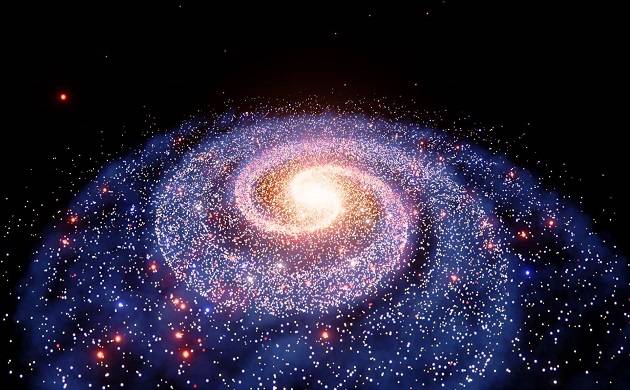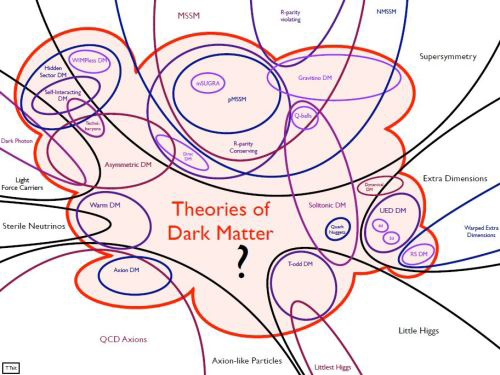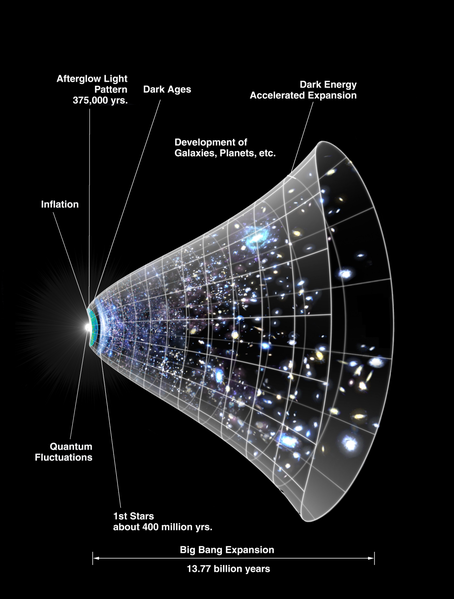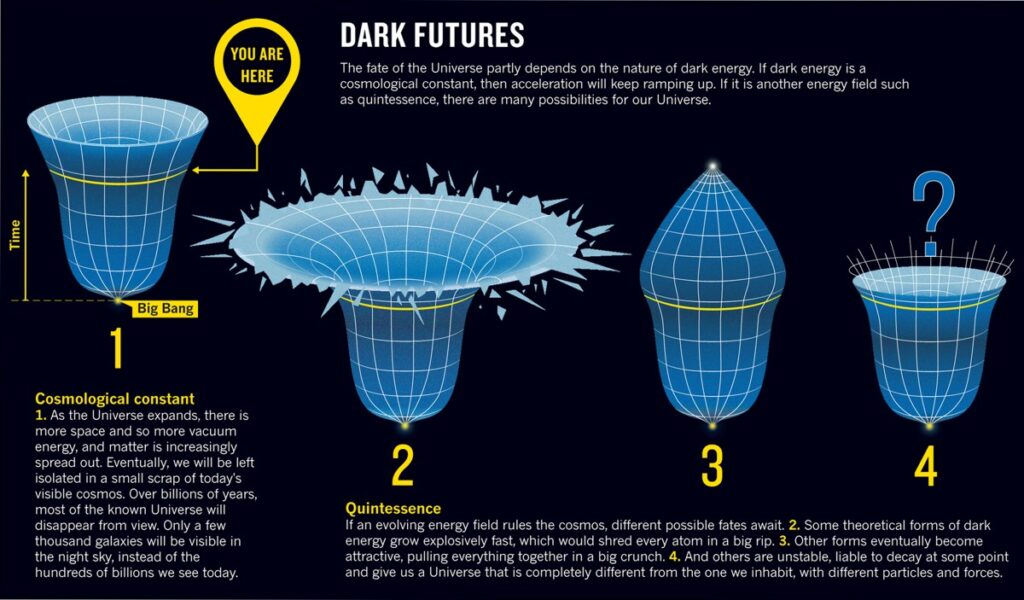Dark matter and dark energy are two of the most intriguing concepts of modern physics. Just like their names suggest, they are shrouded in an aura of mystery. While there is a lot of indirect evidence in their favor, there has not been much direct confirmation of them. Here we look into two of the greatest puzzles of cosmological physics.
Index
Dark matter
Origins
The concept of dark matter arose in the study of cosmological phenomena, that is matters dealing with the Universe and galaxies and so on. As early as the late 19th century, scientists studying the speeds of stars noticed that their motion could not be explained if the visible matter was the only thing influencing them by gravity. Clearly, there was something unseen that was also affecting their motion.
This unseen matter gained further support with more studies. In the 1930s, an astrophysicist, Fritz Zwicky, analyzed the mass of a galactic cluster in two different ways.
- In one, he used the motion of the galaxies to judge how much mass the cluster must have, based on gravitational data.
- In the second method, he used the visible evidence for the number of galaxies to obtain a measure of the mass.
The two answers gave wildly different answers, and he concluded that there was some invisible matter that was gravitationally influencing their motion. Thus the term dark matter was coined.

Evidence for the existence of dark matter
The behavior of galactic clusters is not the only piece of evidence in favor of the existence of dark matter. Studies of galaxies themselves helped produce evidence for its existence.
Specifically, scientists studying the rotation of spiral galaxies (such as our Milky Way) in the 1960s and 70s noticed that the outer edges of the galaxies were moving faster than they should if the only matter present was of the visible sort. A possible suggestion to explain this was that the spiral galaxies were embedded in a sphere of dark matter that ensured the faster motion of the outside edges.
Thus, by the 1980s, dark matter was a serious problem at the forefront of cosmological physics.
Another compelling piece of evidence came from the study of the current structure of the entire Universe. The Universe consists of large clusters of galaxies separated by stretches of vacuum. These structures arose early in the formation of the universe.
Yet, if the visible matter was the only thing that the universe consisted of, these structures simply could not have formed early on in the process, simply because their gravitational pull is too weak to hold them together.
This is not all. Multiple independent studies, such as those of cosmic background radiation, galactic collisions, supernova distance measurements, and so on, all point to the same thing. There is some matter that is invisible, that holds the universe together with its gravity. This forms close to a quarter of the mass-energy content of the universe.
Identity

Normal matter
What could dark matter consist of? Regular matter was a possible candidate, but only if it was closely packed like in a brown dwarf, a type of star. This kind of normal matter, termed MACHOs (massive compact halo objects), could only explain part of the results that pointed towards dark matter.
Another attempt that used known matter suggested that dark matter consisted of neutrinos, which were particles in the Standard Model of physics. Neutrinos do not engage in electromagnetic interaction and hence are invisible. This made them candidates for dark matter, which is also unseen.
However, their small masses, high velocities, and relativistic behavior ruled them out.
New kinds of matter
Clearly, the rest of the dark matter had to consist of some other form of matter, that was outside the Standard Model. Importantly, any candidate form of matter/particle should not interact electromagnetically – otherwise, it would be visible.
Two of the most prominent hypotheses are axions and WIMPs (weakly interacting massive particles). Axions originated in a different area of physics, as a possible solution to a problem faced in Quantum Chromodynamics. However, their application for dark matter lacks any kind of experimental evidence
WIMPs are particles that interact only via gravitation and the weak force, another fundamental force of nature. This fits the bill of dark matter because they do not interact with electromagnetic radiation and are hence not visible.
However, the nature of WIMPs is still a matter of debate and scientists are yet to find conclusive evidence in their favor.
No dark matter?
Is there a more drastic explanation? An alternative theory states that dark matter simply does not exist. All the gravitational effects mentioned before are not the result of dark matter but due to our incorrect understanding of gravity.
One such theory is Milgram’s MOND theory, that modifies Newtonian theory of gravity to explain the difference in galactic rotational behavior. However, at the present moment, it is little more than an empirical adjustment of mathematical formulae, than any deeper theory of gravity. In other words, it does not explain the why of dark matter.
A deeper theory is that of Quantum Gravity, part of the Generational Model of physics. The Generational Model is aimed as an improvement on the Standard Model. Its results are similar to that of the MOND theory.
However, it has a more solid theoretical foundation and derives its results from more fundamental effects. It still has to contend with experiments that suggest the existence of dark matter.
Dark energy
Origins
Dark energy is also cosmological in its origins. Till the 1990s, the consensus amongst the scientific community was that the universe’s rate of expansion is slowing down. This indeed was the case for the early history of the universe.
However, evidence from the Hubble telescope in 1998 showed that the Universe began expanding at an accelerating rate sometime in the past and still is doing so. This came as a surprise to many. It was thought that there was enough mass content in the universe that its own gravity would slow its expansion down.
Dark energy was suggested as the key for this switch from decelerating to accelerating expansion.

Evidence for dark energy
Dark energy is even more mysterious than dark matter. There is even less known about it, and again, all we have is from indirect evidence.
As we have already seen, the accelerating expansion of the universe suggests that there is some form of energy that is the driving force behind it. Studies that suggest this include the distance measurements of supernovae. The level of red-shift obtained from these experiments strongly suggest that there is some form of unaccounted energy that causes repulsive pushing of the universe.
Amazingly, these studies show that close to 70% of the universe’s energy content comes from this “dark energy”. The same studies showed that 25% of the mass-energy of the Universe is from dark matter. All summed, it means that only 5% of the entire universe consists of familiar matter.
Another piece of evidence for the existence of dark energy is the Cosmic Microwave Background (CMB) radiation. The CMB consists of the oldest radiation in the universe. Studies of it suggest that the current universe has a structure that can be explained only by an additional amount of energy, nearly 70%, that is neither dark matter nor normal matter. This tallies with the results of the supernova distance measurements.
Possible explanations

To explain the unexpected behavior of the universe’s expansion, scientists turned to an old part of scientific literature: Einstein’s Cosmological Constant.
It was initially used by Einstein in his General Theory of Relativity. Without it, the theory of General Relativity would predict an expanding or contracting universe. Einstein believed that the Universe was static, so he used the cosmological constant as a mathematical tool to cancel out the expansion or contraction. However, when it was discovered in the 1930s that the universe was not static, the cosmological constant was dismissed as unnecessary.
Now, however, it came back into the focus because it was a great candidate for dark energy. The right value of cosmological constant could straight away predict the accelerating expansion of the universe. Further, it had a physical explanation: vacuum energy fluctuations could very well give rise to it.
The major problem, however, is that quantum mechanical calculations for the cosmological constant give value that is grossly out of the required range. This indicates that either something is wrong with the theory, or our knowledge is incomplete.
Another possible candidate for dark energy is quintessence, a scalar field that is supposed to exist throughout the universe. More flexible than the cosmological constant, this suggests some form of unusual energy that has a negative pressure – hence explaining its repulsive force. This would technically explain the accelerating expansion of the Universe.
Yet, there is little clarity on its nature, and it remains a theoretical device. It is hoped that future space studies shed more light on it.
Conclusion
Despite forming nearly 95% of the universe we live in, dark matter and dark energy have so far evaded human understanding, and remain tantalizing mysteries. Understanding their nature and behaviour could settle some of the most long-standing doubts of physics: why is the universe the way it is, and how will it develop? These intriguing questions drive the scientists in the pursuit for the solutions, and it is hoped we arrive at them soon.

